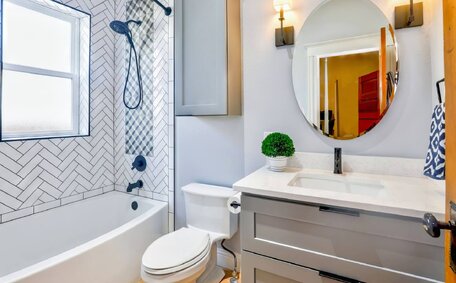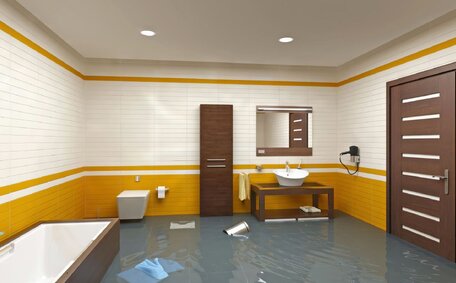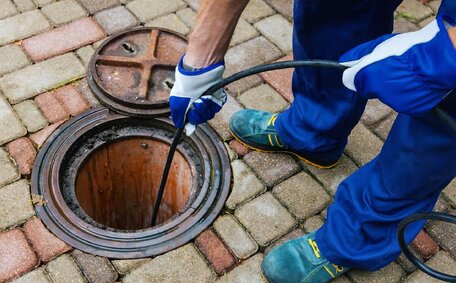Understanding Pipe Relining and When It’s Needed
Drain pipe relining is a cost-saving, trenchless method that avoids excavation, offering a modern alternative to traditional pipe replacement. Pipe relining innovatively installs new lining within existing pipelines, preserving your plumbing’s integrity sans excavation.
Pipe relining becomes essential in several situations:
- In older homes with ageing pipes, decay and wear are common, making relining a suitable repair solution.
- Blocked drains or water flow problems often signal the need for pipe attention and repair. CCTV drain inspections allow us to identify and address interior pipe issues, such as cracks, collapses, and tree root or debris blockages.
- Pinhole leaks, which can damage hot water pipes, are also repairable through relining instead of traditional pipe repair.
The pipe relining process involves meticulous preparation, starting with the use of high-pressure water to clear blockages from the damaged pipe.
We meticulously install an epoxy resin liner in damaged pipe sections, restoring water flow and caring for your plumbing without disrupting your property.
Drain pipe relining offers an efficient and cost-effective way to repair various plumbing faults. If your pipes need servicing, reach out for a no-obligation quote on our extensive pipe relining services.
How to Identify Pipe Damage Early
Detecting pipe damage early with local pipe relining experts is critical to avoid emergency excavation and pipe replacement down the line. There are a few key signs of pipe deterioration to watch out for:
- Slow or blocked drains: If sinks and tubs empty slower than usual, it may indicate the need to repair damaged sewer lines due to debris and mineral buildup obstructing water flow. Tree roots infiltrating pipes also cause clogs.
- Dripping taps or pinhole leaks: Corrosion creates tiny holes that leak water. Catch leaks early before they grow into big pipe failures.
- Musty smells coming from drains: Cracked drainage pipes allow sewer gas to enter homes creating unpleasant odours.
- Visible pipe damage: Check exposed pipes for drips, leaks, cracks, root infiltration or other obvious signs of damage.
- Changing water flow: Decreased water pressure could mean interior corrosion and built-up sediment is constricting flow.
The most definitive way to identify pipe damage is through drain inspections using pipe cameras, which we highly recommend, without the need for disruptive excavation. Our team thoroughly examines pipe interiors looking to repair pipe issues such as cracks, blockages, breaks, and root intrusion among other problematic aspects.
Early detection of pipe deterioration negates the need for trench digging, allowing for trenchless pipe relining rather than total replacement. Utilising the latest technology to make your pipes more resilient, relining forms new structures within compromised ones using epoxy resins, saving homeowners on costs and avoiding excavation hassles.
For a thorough pipe assessment, contact us today to schedule an inspection and stay ahead of any issues. Act swiftly to prevent minor issues from escalating into emergency pipe failures.
Signs of Impending Pipe Failure
There are several clear warning signs that indicate your pipes are failing and need emergency relining:
- Discoloured or cloudy water coming from taps or toilets
- Reduced water pressure - If your shower or taps have gradually weaker flow
- Gurgling sounds from pipes indicating air or gas buildup
- Wet spots on walls or ceilings from unseen leaks
- Cracks in concrete or foundations near pipes
- Frequent plumbing backups and clogs
Timely repairs can be crucial and more cost-effective, avoiding larger expenses down the line. Continued usage will only further damage pipe infrastructure, risking a complete rupture. Should commercial pipe systems succumb to failure, sewer relining provides a less intrusive alternative to costly excavation and replacement for your property.
Prompt relining fortifies your sewer pipes internally with high-quality epoxy resins. contact us immediately to engage our plumbing services for pipe relining if you notice any of the above signs of impending pipe disasters.
Assessing Pipe Age and Materials to Gauge Risk
Understanding your pipes’ age and materials helps us accurately evaluate risk levels and identify relining needs. Older pipes generally require repairs or reinforcement sooner.
Pipe materials also impact durability:
- Copper pipes last 40-70 years. While prone to pinholes, copper is easily reinforced through epoxy relining.
- Concrete PVC pipes—while concrete pipes are crack-prone but sealants and resin linings can further extend their lifespan, PVC pipes last 70+ years and resist corrosion and cracks, yet become brittle over time.
- Concrete pipes are crack-prone but sealants and resin linings can further extend their 50-100 year lifespan.
- Old galvanised steel pipes have high corrosion rates and shorter 15-30 year lifespans. These pipes often require full replacement.
We use pipe cameras on inspection to evaluate the age, material, and condition of your plumbing from the inside. This allows us to gauge risks and determine optimal solutions - whether pipe relining or partial/full replacement.
Understanding the age of various pipes drains helps us recommend suitable restorative actions. We would be glad to help you diagnose your pipes’ lifespan and maintenance needs.
The Benefits of Trenchless Pipe Relining
Trenchless pipe relining presents significant advantages over traditional replacement methods, offering homeowners substantial benefits:
- Minimal disruption - It spares your garden from digging or demolition, preserving the integrity of your property.
- Speed - The relining procedure is usually completed in a day, proving more cost effective than traditional methods.
- Affordability - Relining can be 50-80% cheaper than complete pipe replacements.
- Longevity - Epoxy resins form a corrosion-proof barrier, sealing cracks and holes to prevent future damage.
- Environmentally friendly - Pipe relining generates almost no waste compared to traditional methods
- Versatility - Pipe relining can used to reinforce various pipe materials from galvanised steel to concrete
Pipe relining restores your plumbing, making it resistant to root intrusion, abrasion, and corrosion.
Finding small leaks or cracks early allows our team to focus on repairing pipes through relining your blocked pipes, rather than proceeding with a full replacement of your system. Contact us today to complete your pipe services with our trenchless pipe relining solutions.
Preparatory Steps Before Pipe Relining
Meticulous planning is vital before commencing any excavation repairs or pipe relining works to guarantee superior outcomes. Here are key steps homeowners should take:
- Clear access to all drains and pipes needing repair. Remove belongings blocking pipe access point areas.
- Clean debris and obstructions with drain snakes or high-pressure jetting beforehand.
- Look for any tree root intrusions obstructing pipes during CCTV surveys and ensure all such invasive roots are eradicated.
- Plug any active water leaks detected during inspection.
- Pump out your sewer if conducting sewer pipe relining, to avoid contamination.
- Inform all residents of scheduled water shut offs for the duration of the job.
- Review the proposed relining plan to understand which areas will be impacted and to what extent repairs will entail.
Taking these preparatory steps allows our team easy access to thoroughly clean and inspect your pipes. Meticulous cleaning and precise inflation of the liner use them again ensure a complete bond to damaged sections, reinstating your pipes to their optimal function with assured reliance.
Let us handle preparations and complete your pipe relining safely and efficiently. Get in touch today for relining services to restore your failing plumbing.
Creating an Emergency Plan
It is critical to develop an emergency plan in case sudden pipe failure threatens your property. This plan should include:
- Key emergency contacts like your plumber at Cherrybrook Plumbing for 24/7 plumbing assistance.
- Steps to locate and switch off main water valves to contain flooding from bursts.
- Sandbags, towels and other absorbent materials to limit water damage.
- Plastic sheeting, plywood and water pumps to control flooding.
- A plumber’s snake to clear potential drain blockages exacerbating leaks.
Having an emergency plan equips our clients to act swiftly our clients to act swiftly in the event of catastrophes, like major sewer pipes ruptures or sewage backflows, by providing immediate steps to mitigate damage. We will guide you on managing the crisis until pipe repairs are completed.
Stay calm, limit property damage, and call us immediately in a pipe disaster. We provide 24/7 rapid response to reinstate plumbing operations.
Having Necessary Supplies on Hand
Having the right supplies on hand can make a big difference in managing an emergency pipe situation at your house. Here are some key items every household should have:
- Pipe repair tape - This robust, self-adhesive silicone tape provides a temporary fix for cracks and holes, buying time until permanent repairs are made.
- Plumber’s wrench - Adjustable wrenches help manually turn off main water lines in a burst pipe crisis.
- Buckets and towels - Catch water and contain flooding when pipes fail unexpectedly.
- Wet/dry vacuum - Quickly suck up water spill overs preventing water damage inside homes.
During a pipe emergency, every second counts. Keeping emergency plumbing supplies at hand significantly reduces response times. Call anytime for emergency assistance.
Our Cherrybrook Plumbing professionals provide guidance on tackling pipe emergencies until durable repairs are made, so don’t hesitate to get in touch.
What to Expect During the Pipe Relining Process
Expect a seamless, low-disruption experience throughout the pipe relining process. Here’s a general outline of what to expect:
- Initial Assessment - Our team of experts will do a full video inspection of your pipes using CCTV cameras to determine damage levels and relining needs.
- Pipe Cleaning - The pipe cleaned using high-pressure water jets ensures the removal of debris, mineral deposits, and adequate preparation of the pipe’s surface.
- Custom Epoxy Liner Insertion - we insert a liner custom-fitted to your pipes’ specifications crafted to seamlessly adhere to the damaged section pipe areas.
- Curing & Hardening - The liner then cured in place, typically with hot water or steam, to permanently solidify without the need to dig into a smooth, seamless lining.
- Final Testing & Finishing - Once cured, your pipes are rejuvenated. No need to dig, we verify for any leaks or concerns to guarantee integrity before reinstating the water lines.
The relining task can take as little as 1-2 days, ensuring there no need to dig up your yard, thus minimising disruption to your household routines. Our team ensures a clean work area post-relining, managing all job aspects, including clean-up, to resume normal water function. Contact us to learn more or schedule pipe relining services.
The Pipe Relining Procedure Step-by-Step
The pipe relining process for a damaged sewer involves several key steps:
- Inspection: We thoroughly inspect the damaged pipes using a drain camera. This allows us to examine the full extent of the damage and determine the best repair method.
- Cleaning: Next, we clean out the host pipe with high pressure water jets to clear blockages and debris, roots, grease or mineral deposits.
- Liner Installation: we introduce a cipp pullinplace pip liner, an epoxy resin material saturated with fibreglass or felt, precisely modelled to fit the contours of your ailing sewer system. This pullinplace pipe (CIPP) liner bonds tightly, guaranteeing the sewer line regains its structural stability.
- Curing: To avoid a dig pipe situation, the liner is cured with hot water or steam to activate and solidify the epoxy resin, forming a robust, jointless, and corrosion-resistant new sewer pipes.
- Final Testing: Once fully cured, we reopen water lines and use a drain camera to check for leaks or other issues to ensure integrity. Your pipes now have enhanced flow and longevity without having dug trenches.
This no-dig pipe relining method allows deteriorating pipes under buildings or difficult areas to be restored without disruption. Should you require more information, feel free to reach out to us with your queries!
Post-Relining Maintenance Tips
After pipe relining is complete, there are a few maintenance tips to follow for optimal longevity of your new pipes:
- Steer clear of introducing fats, oils, and strong chemicals into drains to prevent damage to the epoxy lining.
- Have regular drain inspections every 2-3 years using CCTV cameras to check liner condition and catch any new issues early.
- Clear minor drain clogs right away and trim back encroaching roots with pipe-safe herbicides to prevent major blockages.
- Update any leaky plumbing fixtures, taps or valves that could erode interior walls of the reinforced liner.
Through proactive care, you keep your relined pipes in prime condition. We offer complimentary consultations to assess post-lining condition and make recommendations to extend the lifetime of repairs.
Contact us anytime for maintenance advice or to arrange an inspection of your freshly relined plumbing.






